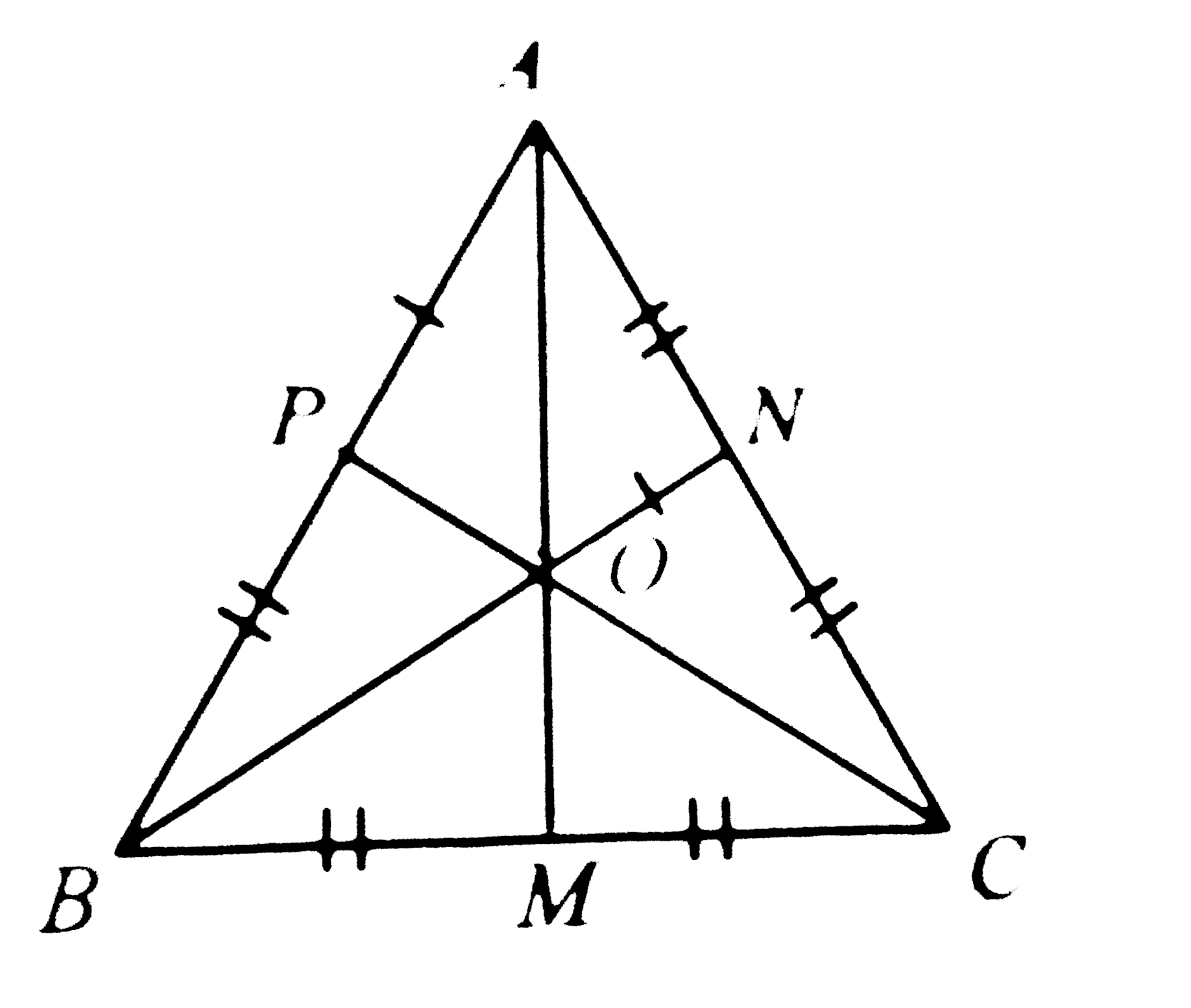If →a,→b,→c are the position vectors of the vertices of an equilateral triangle whose orthocenter is at the origin, then
→a+→a+→c=→0
→a+→b+→c= unit vector
→a+→b=→c
→a=→b+→c
The correct Answer is:A
Position vectors of vertices A, B andC are →a,→band→c.

∵ triangle is equilateral.
∴ Centroid and orthocenter will coincide.
Centroid ≡ orthocenter position vector
=13(→a+→b+→c)
∵ given in question orthocenter is at origin.
Hence 13(→a++→b+→c)=0
→a+→b+→c=0
Topper's Solved these Questions
Similar Questions
If →a,→b,→c are the position vectors of the vertices of an equilateral triangle whose orthocenter is at the origin, then
View SolutionIf →a,→band→c are the position vectors of the vertices A,B and C. respectively , of △ABC. Prove that the perpendicualar distance of the vertex A from the base BC of the triangle ABC is ∣∣→a×→b+→b×→c+→c×→a∣∣∣∣→c−→b∣∣
View Solution
Knowledge Check
IF →a,→b,→c are the position vectors of the vertices of an equilateral triangle whose orthocentre is at the origin, then
A→a+→b+→c=→0B→a2=→b2+→c2C→a+→b=→cDnone of theseIF →a,→b,→c are the position vectors of the vertices of an equilateral triangle whose orthocentre is at the origin, then
Aa+b+c=0Ba2=b2+c2Ca+b=cDnone of theseIf →a,→band→c are the position vectors of the vertices of an equilateral triangle whose orthocenter is at the origin, and then which one of the following is correct?
A→a+→b+→c=→0B→a+→b+→c= unit vectorC→a+→b=→cD→a=→b+→c
If →a,→band→c are the position vectors of the vertices A,B and C. respectively , of △ABC. Prove that the perpendicualar distance of the vertex A from the base BC of the triangle ABC is ∣∣→a×→b+→b×→c+→c×→a∣∣∣∣→c−→b∣∣
View SolutionIf →a,→band→c are the position vectors of vertices A,B,C of a ΔABC, show that the area of triangle ABC is 12∣∣→a×→b+→b×→c+→c×→a∣∣. Deduce the condition for points →a,→band→c to be collinear.
View SolutionIf →a,→b,→c are the position vectors of the vertices. A,B,C of a triangle ABC. Then the area of triangle ABC is
View SolutionABCD is parallelogram →A,→B,→Cand→D are the position vectors of vecticles A, B, C, and D with respect to any origin, them:
View SolutionLet the position vectors of vertices A,B,C of ΔABC be respectively →a,→b and →c. If →r is the position vector of the mid point of the line segment joining its orthocentre and centroid then (→a−→r)+(→b−→r)+(→c−→r)=
View Solution
